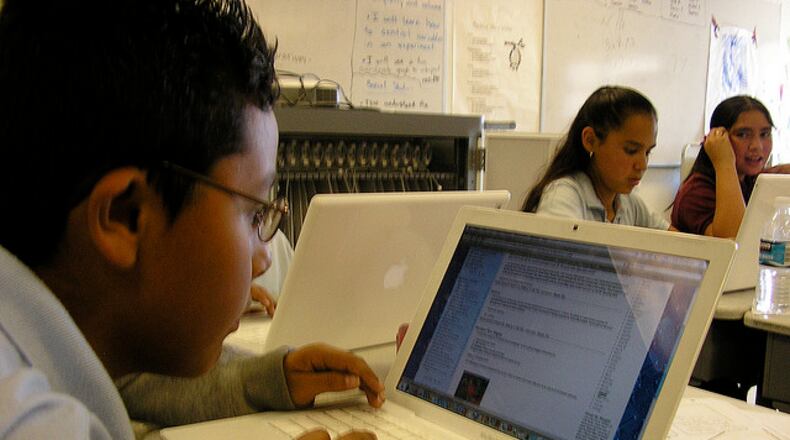Tauheedah Baker-Jones is the chief equity and social justice officer of Atlanta Public Schools. In this guest column, Baker-Jones addresses the urgency in bridging the digital divide, especially given that online learning has become and will remain more prevalent in the COVID-19 and post-COVID era.
By Tauheedah Baker-Jones
As medical research reveals how the coronavirus disproportionally affected people of lower socioeconomic status, the pandemic also laid bare other inequities, specifically the uneven distribution of technology and access to information, a situation known as the digital divide.
This divide significantly affects our state. A current broadband map reveals that even today more than a million Georgians lack access to reliable high-speed internet service. Additionally, a Pew Research study conducted in the immediate aftermath of COVID-19 shows more than half (59%) of low-income households (income less than $25,000/year) faced obstacles with digital learning either from lack of devices or insufficient connectivity.
But such a divide existed long before the COVID-19 pandemic hit America and the world a year ago. For decades, a chasm stretched between the information haves – those with access to personal computers, mobile tablets, high-speed access – with the information have-nots – those who do not possess these technologies.
Causes of this digital divide can be attributed to socioeconomic, socio-cultural, education level, and environmental factors. For many in communities of color access to technology was perceived in part as a luxury; thus, many families did not see any immediate benefit to owning a computer, laptop, or tablet. Moreover, smartphones provided access to the internet, so many of these families did not seek other broadband and internet services. Food, clothes, rent, and health care stood as the real necessities.
In a highly technological world, this lack of access to information poses substantial impacts on educational outcomes. And when COVID-19 shifted this technology from luxury to a basic need, many families and communities could not afford or procure devices and access.
Credit: Photo courtesy of Atlanta Public Schools
Credit: Photo courtesy of Atlanta Public Schools
As the high-tech hub of the South and the birthplace of the civil rights movement, Atlanta can and should be the leader in this change.
I am encouraged by the work so far to provide every Atlanta Public Schools student with sufficient technology and access. Thanks to partnerships with T-Mobile, Sprint, AT&T, and Comcast, we have provided 15,361 hotspots or in-home connectivity to our students & families. We have also been able to distribute 48,689 devices (primarily Chromebooks and iPads) to our students needing devices at home to support virtual learning. This is thanks in large part to our Get Our Kids Connected campaign.
Through our additional investment of more than $25 million, we will now be able to provide a new Chromebook or iPad to every student at the start of next school year.
Due to these efforts, we have helped families adjust to a new personal paradigm of work, play, learning, and wellness from their own homes in this time of coronavirus. Additionally, average student login rates in Atlanta Public Schools have increased from 70% in March 2020 to 99% last semester.
But there is much work to do.
Even after our district supplied devices and hot spots, there are still sizeable numbers of families without connectivity due to lack of wireless internet towers or reliable connectivity within their community. While we have come together to find short-term solutions, we must now work toward a comprehensive plan for the future when devices become outdated and hotspot contracts expire.
I am further hopeful about interest and efforts in our city and state. Among the most promising developments, the Georgia Innovates Taskforce has sought to shape our state into the “technology capitol of the East Coast” and has formed the Partnership for Inclusive Innovation.
On our end, Atlanta Public Schools plans to assess the extent to which COVID-19 has exacerbated the inequities that have already existed within our school communities, including the impact of the digital divide on learning and achievement gaps. We also plan to explore ways as a district that we can support narrowing the divide by reimagining education through the lens of technology.
The pandemic served as a wake-up call to narrow the digital divide. Access to reliable high-speed internet service has become elevated to a necessity in America; it is simply impossible to fully participate in society without that kind of access. Local, regional, and national leaders must work together with the telecommunications and technology industries to ensure that every student and every family from every neighborhood has a fair shot to succeed.
About the Author
The Latest
Featured



